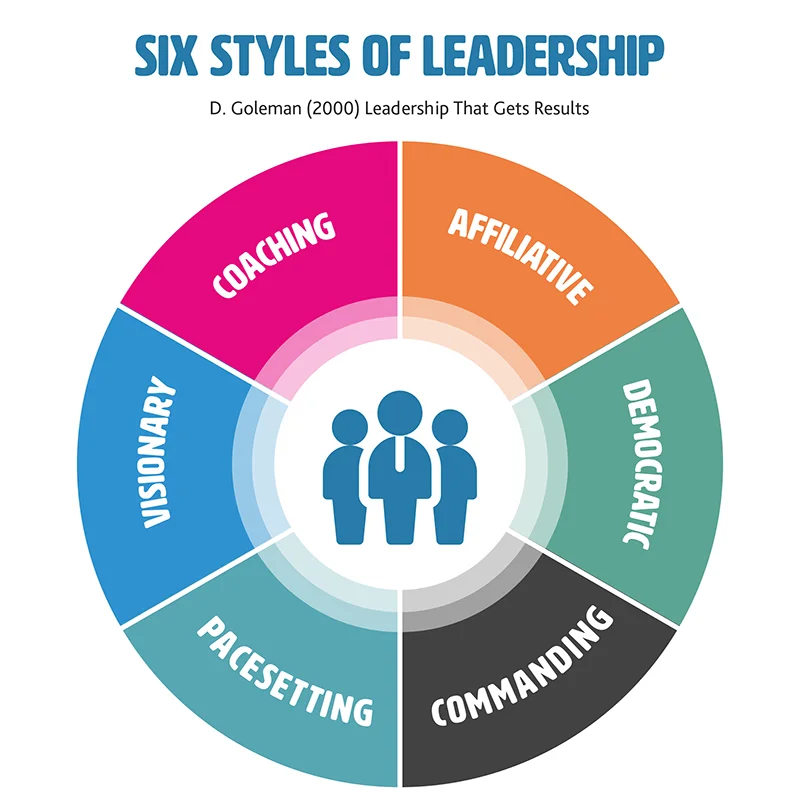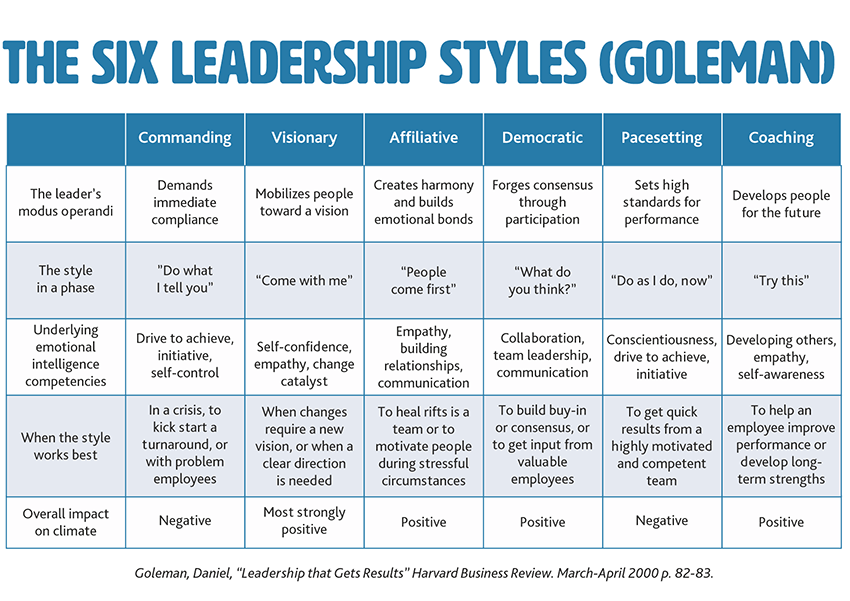🏢 9,000+ Organisations
🏆 6 x L&D/HR Awards
⭐ 4.8/5 Highly Rated
🧠 24 Years' Experience

Over the decades we have seen an evolution of differing management and leadership styles, all adapting to, and being driven by, societal and business needs, some being rationalised by the results they achieved (e.g. Total Quality Management), others being assessed by the emotional connection they built with their teams (e.g. High Emotional Intelligence). We’ve covered a lot of different styles on the blog such as servant leadership, John Adairs action centred leadership model and Tuckman’s forming, storming, norming, performing model.
The connection between them all has been the variety of lessons learned as its evolution has been guided by generational norms and outside pressures like financial crashes, economic recessions and pandemics.
One specific style, the subject of this article, has been lauded for its application through good times and bad. Visionary Leadership is not a new concept and will continue to be a requirement within business as we feel our way through the next decade.
Let’s discuss what different leadership styles exist, where visionary leadership came from, the characteristics of a visionary leader, the styles pros and cons and we look at examples and role models of leaders who have demonstrated this particular style.
With the focus being on the application of visionary leadership, we’ll identify when and why it may be the mindset we need to help business grow after the challenges at the start of this decade.
Different styles of Leadership
On our Management Training we always tend to kick them off by discussing leadership styles. But why do we often discuss the need for differing styles of leadership? Simply put, different situations, different personalities and different companies require differing actions and mindsets to deal with the issues and challenges encountered. An activity like a 360 Degree Assessment will normally give a manager some pointers as to whether their style is working but what, exactly do we mean by leadership styles?
Well, the common definition concerns where a manager or business leader feels most comfortable in dealing with staff and other issues, determining the way to get results through others and what level of ‘power’ is needed to achieve pre-determined results.
By exhibiting the right ‘style’ of leadership, a person can achieve better results, more engagement, higher levels of motivation and an increased performance level. Get the style wrong and the direct opposite can occur, often with long-term consequences. The most commonly quoted leadership styles revolve around work done by Daniel Goleman.
The differing styles are quite widespread, ranging from the more draconian, autocratic manager (repeating the adage born from Scientific Management theory, espoused by, among others, Frederick Taylor) to the more affiliative, democratic and supportive styles, designed to be inclusive and delegatory.
Goleman’s styles cover a wide range of options for the leader to adopt, depending on the circumstances and situations faced.
Here are the 6 styles:

Needed when fast decision-making is required, the team trusts the leader to make good decisions and little or no team involvement is required. It saves time and can get quick results, but can affect communications down the line and miss opportunities where collaboration would identify other options to achieve results.
Needed when buy-in from team members is required to move forward. The leader involves more people in finding solutions, allowing creativity to drive performance forward. It can create a motivated, well-driven team and can also slow down the processes, as people need time to consider the options to go forward.
Goleman describes this style as ‘building relationships, close communication, showing empathy’ so an affiliative style creates a harmonious atmosphere when working through stressful conditions and circumstances. People feel motivated because there is a feeling of camaraderie and the leader shows an understanding of the needs of the team through that empathetic relationship-building. It’s needed when the team is struggling and requires a helping hand.
Needed when a leader needs quick business results, often associated with sales and marketing targets. Very often displayed by a salesperson who becomes sales manager, this style epitomises high-performance teams and allows motivation and competence to be self-developed and self-driven.
It works when team members are committed and competent, so the leader can drive results through target-setting, faced-paced creative projects and setting the example of the pace to be worked.
The benefits of having quick-fire results and high-energy teams can be offset by the stress caused by the demands set upon the team, so it’s not always seen as the most effective style to adopt long-term
Where the leader has an experienced team who need support to get the tasks done, relying on the assistance of the leader when necessary. This style helps team members to learn quickly and effectively, putting ideas into action with the leader facilitating the growth and development of the team. We have several management coaching techniques that you can use.
Benefits include the improvement of morale as teams learn and develop together, but it can also be stilted by the skillsets and competence of the leader if the coaching style is overused.
Goleman talks about this style as having inspiring, long-term goals that take the department and company forward, creating an atmosphere where team members can build their knowledge and abilities, knowing they have a mission that allows progress and development.
With this style, by its very nature, leaders have visions and missions that people buy into, inspired by the direction it will take them now and in the future. Short-term focus may be sacrificed for the greater good, but the journey is far-reaching and deterministic. These and other styles are being adapted for the post-pandemic world, as people require confidence and trustworthiness from their leaders, as well as inspiration, drive and that humanistic touch.
Visionary leadership can be seen as one of the pre-requisites for that mindset to be developed in people as we progress with our businesses.

As mentioned, Daniel Goleman is credited as defining the term ‘Visionary Leadership’ in his work from 2002. The original concept was derived from the term ‘transformational leadership’, discussed by sociologist James Downton Jnr, along with scientist James MacGregor Burns who, in 1978, elaborated on the theme in his book ‘Leadership’.
The underlying attributes of transformational leadership were studied at length by Bernard M Bass, who also considered the attributes of charismatic, inspirational and intellectual leaders, and developed the idea of leaders transforming businesses through visionary ideologies. Daniel Goleman further developed the whole concept in his studies for his seminal book “The New Leaders: Transforming the Art of Leadership”.
Goleman developed the theme when he went on to discuss the power of emotional Intelligence in leaders. Visionary leadership can be described as ‘the ability to drive teams’ thinking by communicating an inspirational, motivating and stimulating future people will want and choose to buy into’.
They also give the freedom of creativity and intelligence to their team to achieve the goals that will pepper the journey they go on in pursuit of the vision. The level of commitment that people need to follow a visionary leader is high, but the rewards can also prove to be decisive in encouraging participation in, and building of, that vision. With today’s challenges being some of the greatest this generation have experienced, we need visionary leadership to help us tap into the enormous potential that still remains in our teams.
The Characteristics of a Visionary Leader
The styles mentioned earlier require certain characteristics. For example: Autocratic leaders need confidence, boldness, charisma and the ability to get results in double-quick time Democratic leaders need charm and good teamwork skills to encourage team members to bring their best selves to every situation. Laissez-Fair leaders need commitment from their team to achieve results when there is little pressure to achieve in the short term. Coaching leaders need the ability to ask deep, critical questions to get their team thinking at different levels and develop their skillsets. Please check out The Tannenbaum and Schmidt Continuum of Leadership which depicts seven different styles of management differentiated by the degree of control exerted by the manager over their team.
So, what are the skillsets that a quality visionary leader will require?
Let’s look at a few here and see how they can be incorporated into a normal business environment:
1) They have strategic insight
Strategic thinking is a pre-requisite when visioning for the future. This style of thinking allows you to identify the current challenges your team and business are facing, what the meaning of those challenges are and the best ways to deal effectively with the situations now and in the future.
2) They are able to communicate the vision and mission clearly and effectively
It may seem obvious, but the vision that a visionary leader communicates has to be inspiring, engaging and motivational. If the vision doesn’t drive the team forward, getting their buy-in through quality communication, the leader risks being impotent in their message and considered as passionate and charismatic at best, and a deluded dreamer at worse.
3) They display good emotional intelligence qualities
EQ can make or break a leader. They need to be self-aware, understanding what their emotions are telling them and building their natural positive state, and also self-reliant and self-driven. Those personal traits are then complemented by their ability to understand and influence the emotional states of others, getting them to buy into the visions and missions that will drive the company forward
4) They have empathy and compassion
It’s strange to think that a leader should show a clear understanding of the emotional states of other people, but it is one trait that makes a visionary leader stand out. Having a clear understanding of the effect the vision and mission will have on other people allows the visionary leader to build awareness and compassion as they push towards the goals.
5) They have a collaborative nature
We often hear leaders talk about co-operating with their teams to get results. Collaboration goes that one step further, where you link the skillsets of people you work with, with the goals and objectives that will encourage growth and development. Collaboration means synergising the relationships you have and creating opportunities for others to show their best work and attitude.
6) They encourage and engage others on the journey
There is little chance for a visionary leader to get results on their own. They need the support, engagement, drive and motivation of other stakeholders to achieve what they know they can envision. By encouraging and engaging others, it makes the vision more attainable and gains commitment from the team
7) They are fully focused on the journey and the goal
Visionary leaders know that the top of the mountain is the objective and they are fully committed and focused on that. But they also know that any mountain that can be climbed involves a journey that can be hazardous and so needs resilience. Concentrating on what needs to be done to get to the final goal means they are realistic on the tasks and projects that can be carried out, gaining and building commitment from others on the journey to the end goal.
8) They have innovative and creative ideas
Although leaders know and follow guidelines on what has worked before, visionary leaders use that term deliberately to develop the mindset of innovation and creative thinking. Although a vision can be ethereal and hard to picture at times, the essence of a mission that inspires people can determine a greater commitment from everyone involved. These eight components compliment each other to form a strong alliance and assist the visionary leader on their journey to achievement and success.

To ask why having leaders with vision is important may seem like a crass question; it’s so obvious that we don’t need to explain it. But why is business so much in need of it, especially in today’s environment? There are many reasons.
Here are just some.
1) We are working in a VUCA environment
Seldom do we go through crises like the recent pandemic and come out unscathed. The ‘new normal’ as it’s categorised, is full of Volatilities that need calming, Uncertainties that need confident responses, Complexities that demand simplifying and Ambiguous components that need straightening out. Indeed, we are now living in a VUCA environment. Visionary leaders can give people confidence where there is little, freedom to express themselves where there may be fear, and a mission to aspire to where there may have been confusion and chaos. Whatever environment society and business find themselves in, a visionary leader gives the people hope and inspiration that the future will be just as good as or better than before.
2) They are able to see beyond the foggy present
When crises hit, the subliminal reaction is to hunker down, deal with present conditions and focus on survival. What visionary leaders can do is look beyond the current dilemmas and, using far-sightedness and imagery, determine what the medium and long-term focus should be on. They are able to envisage a future that isn’t hindered by current conditions and obstacles. They can foresee what the end goal should be and the journey it will mean for them and their team. By having this vision, it clears the fog and allows others to see the end goal with clarity and certainty.
3) It creates trust in followers and other leaders alike
Trust is always the result of previous actions, and if a leader has shown vision in the past, they incite their teams to build trust in them again for future situations. Think of leaders who have been proved right in the past. When their visions come true, what do others say about future ideas? The trust has been built up and confidence is increased in their decision-making
4) We need vision to help guide us on journeys that no-one has been on before
ow do you feel if you are working with a leader who dithers, doesn’t inspire confidence, or gives mixed messages? Then, how do you feel if a leader has an inspiring message that you can identify with and creates engagement and drive? A lot of this next decade will need inspirational leaders who will drive our businesses forward with honesty, integrity and trustworthiness. None of this generation have gone through a pandemic and determined the type of world we want afterwards. Visionary leaders create thought-patterns in others that inspire and allow confidence to build. Everyone needs a clear path to follow so they can grow as an employee, a manager, a person. Visionary leaders give us that and more.
The pros and cons of visionary leadership
The pros
The benefits of visionary leadership are manifold, driving the performance of individuals, teams and companies to build new ideologies in the future. When people follow a vision that is communicated well, inspirational, uplifting and attainable, people tend to want to follow it as it contributes to growth and development in all senses.
The cons
But, are there disadvantages of displaying visionary leadership? Depending on the situation faced, there may be issues that need to be addressed. Isn’t it true that always aiming for a vision in the future takes the focus off today’s climate? Maybe the leader themselves could become the focus of attention, making team members lose sight of the real goals by putting too much attention on the charisma and personality of the individual leader. Let’s summarise the pros and cons of a visionary leadership style:
| Visionary leadership pros | Visionary leadership cons |
| It can be inspirational to people who want to look forward | The leader could get to be seen as the ‘guru’, with their personality becoming more important than the vision |
| The communication can give a clear picture of the future of a business or organisation | The focus may be taken off current challenges in favour of always looking to the future |
| They think creatively and pro-actively, producing ideas that others hadn’t seen before | The vision could become all-encompassing, hiding other ideas that may be just as good or better |
| They can ascertain risks and consequences of them, before making decisions that will take people forward | The inspiration built by the vision may fizzle out as present dilemmas take precedent over future visions |
| They are forward and future-focused, building trust and commitment from teams that engender innovative thinking and positive interactions | If the leader leaves, the vision may go with them, especially if it’s tied up with that person’s identity |
By comparing the pros and cons, we can decide when it’s best to apply visionary leadership styles and when we can work on other styles that may complement and add to the benefits of this style. It’s something that we pay a lot of attention to on our Management Development Programmes and Managerial Courses.
We can do little better to see the virtues of visionary leadership than discussing various individuals who have displayed this trait and style in their business dealings. Here, we discuss some whose legacies have left a clear mark on the business world and the planet as a whole.
1) Andrew Carnegie
Arriving in the US from Scotland, Carnegie built his presence in the new world though investments in oil, amongst other things, and his vision enabled him to build empires that created thousands of jobs and heralded a new age of industrialisation, much of which we still feel today. When he retired, he spent much of the latter parts of his life giving away what he had build up previously. Buildings still exist with his name on them and many US libraries owe their beginnings to his philanthropic ideologies. Carnegie’s vision showed what was possible when one person has the creativity to decide how the future should be shaped.
2) Malala Yousafzai
She was put on the list for an International Children’s Peace Prize in 2011 because of her work with children and advocating their rights to education. Even being shot by the Taliban didn’t stifle her visionary instincts. Even today, she still fights for girls’ rights to be educated effectively She won the Nobel Peace prize in 2014 and her life’s theme is to ‘”champion every girl’s right to 12 years of free, safe, quality education.” Her vision has inspired a generation to build their courage in the face of great opposition and acts as a great example of leadership without being in a leadership position.
3) Steve Jobs
Although many will see his style as being one that alienated a lot of people, there are no doubts that Jobs’ vision created much of what we use today in communications. One story that epitomises his vision was when he visited Xerox in the late 1970’s. Although the story turns out to be a myth, the vision that Jobs had concerning the graphic user interface and the mouse, which he went on to develop and engineer into much of what we use today, is true, and is indicative of just one way his mind worked to deliver results we benefit from today. Some Leadership Training today includes his specific approaches to how he conducts presentations and how he structures his communications effectively to influence and motivate others.
4) Alexander the Great
No military strategy workbook is complete without mentioning this great leader, whose third century BC empire stretched from the middle to the far-east. Although dead before 40 years old, he packed so much visionary leadership into his short life that many books don’t do him justice. His greatest attributes were seen as his vision and adaptability under stress, his capacity for strategic interventions, thinking on his feet in an instant when under pressure, and his fortitude and resilience when things didn’t go right. He created many legacies for military strategists to follow, his visionary leadership being just one way he inspired his legions and his nation to win battles they could and should have lost.
5) Elon Musk
This example shows how visionary leadership can be beneficial for business and the world as a whole. His entire focus in life has been (just like Steve Jobs) challenging the status quo, building businesses from low levels and visioning what they could become. During the 2008 recession, Musk faced a dilemma concerning which of the two major companies he headed up would survive, as both Tesla and SpaceX were facing closure. His vision saw both succeeding, so he risked everything and saved both.
What links those Visionary leaders above? What styles did they adopt to build their legacies? Is it possible for other leaders to exude the visionary style? Remember, these leaders are not supermen or women.
They have built on their strengths to become leaders who have driven their organisations onward towards a vision that inspires and drives others to form a coalition of greatness.
By acting on those strengths, visionary leaders create a legacy for themselves and their businesses as they work toward providing possibilities that previously didn’t exist. Become that catalyst for change in your business.
Take on the mantle of visionary leadership and identify situations where that style will help people grow and develop, hence attaining goals and objectives that make a real difference in the environment you work in.
We’re constantly asked what makes a good team leader and our answer invariably includes the ability to learn and use different leadership styles at different times and the visionary style being one of them, when the time is right.
Take this leadership test to see what your own leadership style is. Other diagnostics can help you to become a better leader as well include disc profiling and MBTI.

Written by Sean McPheat
CEO of MTD Training and Amazon bestselling author. Sean writes about leadership, business, and personal growth, drawing on 20+ years of experience helping over 9,000 companies improve performance.
Updated on: 16 July, 2020
Related Articles

Search For More 